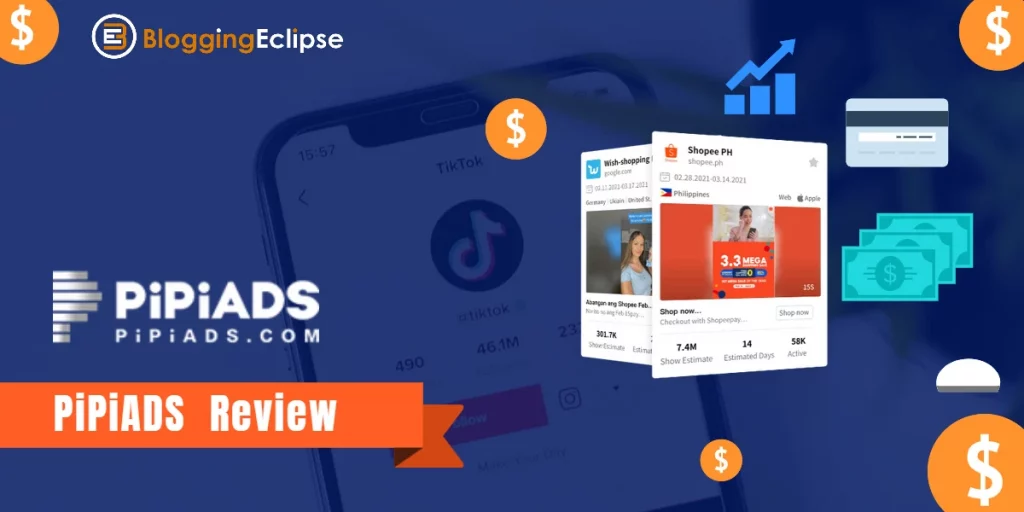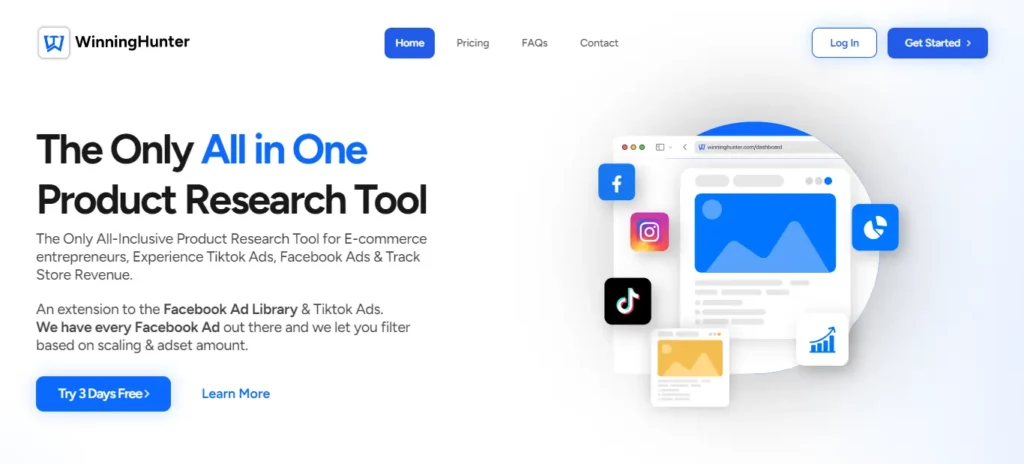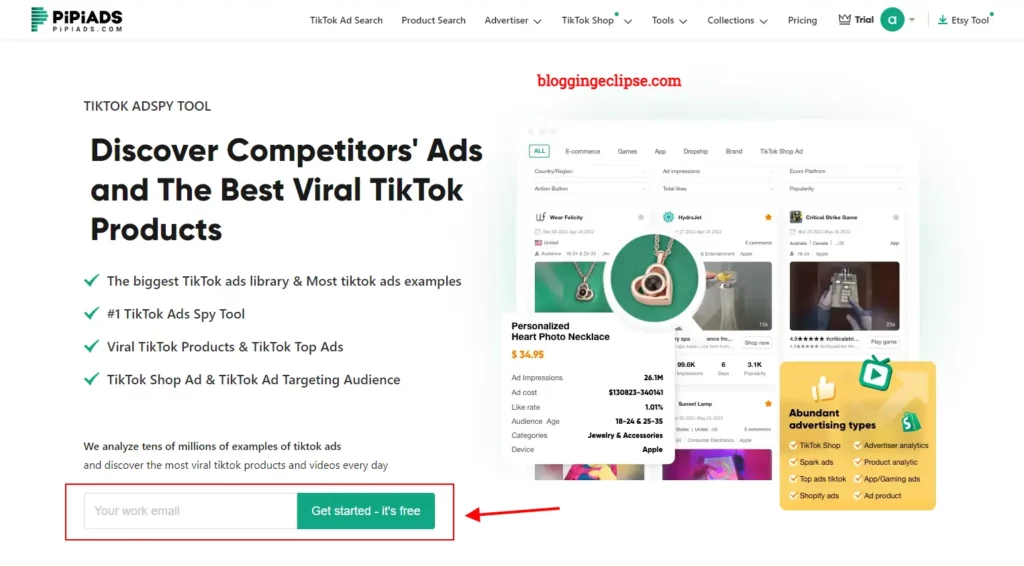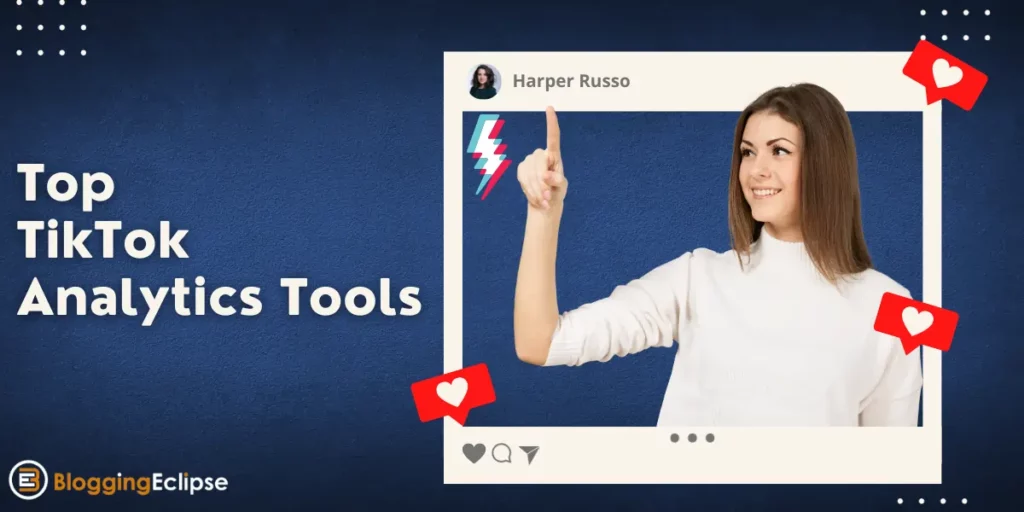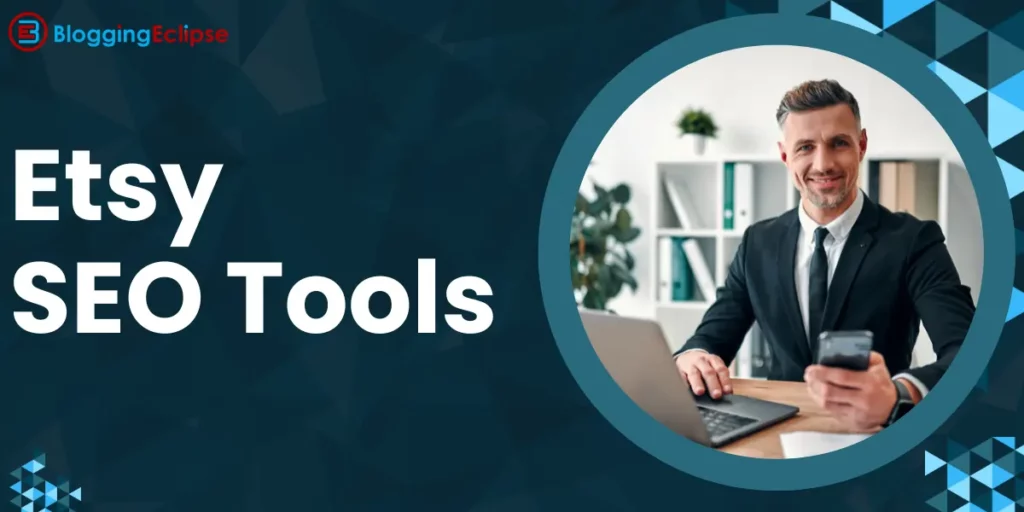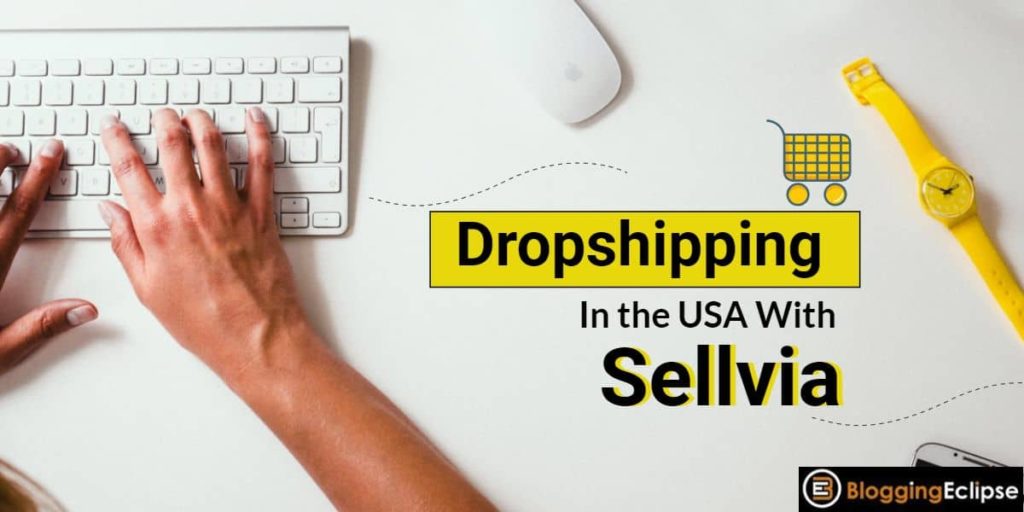Are you looking for the right e-commerce platform? Confused between Shopify and Etsy? Read ahead our Shopify Vs. Etsy review. Online selling platforms have changed the way we shop. They bring convenience and accessibility to goods and people all over the world.
The rise of online selling is often seen as a win-win for both consumers and businesses. Consumers enjoy the convenience that these e-commerce sites provide, while businesses benefit from lower overhead costs and greater opportunities for growth.
The shift has brought a lot of changes in the way people do their shopping, but it will also have a significant effect on how businesses conduct their sales. Online shopping is becoming more and more popular, and companies are trying to keep up with the current trends by incorporating these new platforms into their marketing strategy. There are many options for you to start your own online eCommerce business. There are many different methods and options for you to choose from when looking for the best eCommerce platform for you.
Nowadays, being an online seller is one of the most trending ways to generate some handsome income. You can either create your e-commerce website or use an online marketplace to sell your products.
Shopify is an extraordinary stage for building your web-based business site, and Etsy is a popular marketplace for selling products on the web. Through this blog, we will compare Shopify Vs. Etsy and check which is the better alternative. This comparison will likewise assist you in deciding whether one of them can put back the other.
Let’s get started.
Shopify Vs. Etsy | The Ultimate Comparison
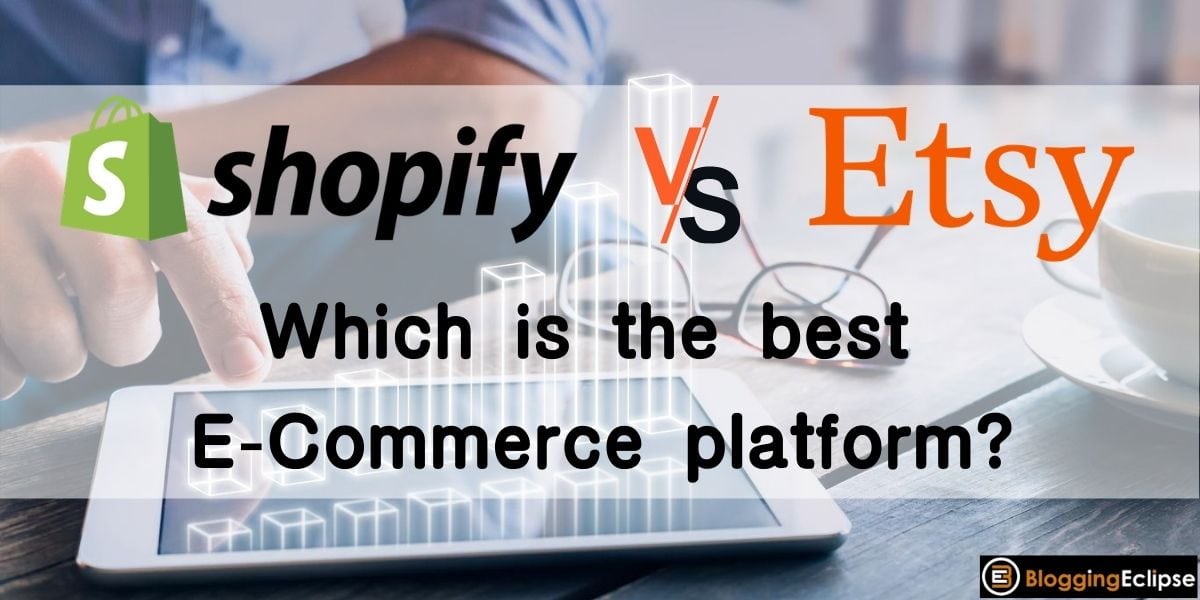
Shopify
Shopify is an extraordinary online stage that encourages you to build your eCommerce site. It is extraordinary compared to other internet business building stages in India. Established by Tobias Lütke and Scott Lake in 2004, Shopify is presently one of the greatest internet business stages worldwide.
Shopify has an incredible group of tools that help you launch and maintain your business on the web. It encourages you to find your customers, monitoring your sales, and dealing with your day by day business. Shopify is an incredible spot to begin your business as it encourages you to run and develop your business. It has an incredible App store and leads you to construct your business through numerous commercial centers.
Also read: Shopify Booster Theme Review + Discount Coupon (100% Working)
Shopify likewise offers you a specialist’s assistance if some master counsel on running and launching your business is needed.
What can you sell here?
Without much stretch, you can sell a wide range of items on Shopify. Shopify permits you to sell physical and digitally advanced products. This is an incredible element as digital items are likewise very trending, and a single-stage for selling both these items is ideal by everybody.
Etsy
Etsy is an online commercial center that permits the vender to sell their items on the web. Established in 2005 by Haim Schoppik and Chris Maguire, Etsy is being utilized by over 1.75 million merchants everywhere throughout the world. More than 33 million purchasers additionally utilize it over the globe.
Etsy encourages you to sell your items straightforwardly to your customers through its express marketplace, which doesn’t constrain the client to go to the store to finish the exchange initially. Etsy encourages you to arrive at your likely customers and advance your product. It likewise is an extremely valuable tool when we talk about the simplicity of selling and the ease of using a web-based selling tool.
What can you sell here?
Through Etsy, numerous individuals from various regions of the world buy a variety of items. As Etsy is a commercial center, the sorts of items sold on Etsy are limited. Without much stretch, you can sell crafted items alongside homemade items to your customers. You can also sell Vintage items, which are at least 20 years or more seasoned through Etsy.
Etsy Pattern – Expand your online sales beyond the Etsy marketplace!!
Etsy has created an e-commerce platform to allow those who want to sell their own creations a chance. It is called Etsy Pattern and is easier for people to build a standalone online store, which means there are fewer restrictions on what you can offer your customers.
For 30 days, you can try Etsy Pattern for free. After that, it’s $15/mo. Etsy Pattern is a separate platform from Etsy & you’ll have to create your own traffic sources to make money with this service. At first glance, the platform itself is simple and straightforward. It doesn’t boast the same features that Shopify does, but it can still be an effective option if you sell through Etsy marketplaces.
With Etsy Pattern, your Etsy shop listings are synced with your website, you get to choose from beautiful, customizable templates. You can easily pick what items you want to import from your Etsy shop inventory; Etsy Pattern also lets you sell items you normally cant on Etsy itself.
There are two ways to use Etsy Pattern:
First, you can use the main version of Etsy to power your Pattern Store, where you can add a product catalog to Etsy that would increase the number of products on your site. Also, the data would be synced with both platforms.
Secondly, you can add items directly to your Pattern store and sell them separately, and the product would not appear on ‘normal‘ Etsy. Also, like in the case of the Etsy Platform, these goods need no to be vintage, crafting or handmade items.
Also, as described earlier, Pattern costs $15 per month, which is $14 cheaper than the Shopify ‘Basic’ plan.
But it is important to note that Pattern by Etsy lacks many of the ecommerce features like built-in email marketing, dropshipping, advanced search engine optimization features and abandoned cart savers, which you get in Shopify. Additionally, you can manage both your website and your Etsy store from a single platform.
How is Shopify Different from Etsy?
Shopify is an ecommerce platform. Etsy is an online marketplace for handmade and homegrown products, as well as vintage and repurposed goods. They’re both online marketplaces, but they differ in what they offer.
Shopify is an ecommerce platform designed for anyone to set up and grow their online stores. They have many powerful tools to help you do this in a number of different ways.
You can easily create your own web store with this easy ecommerce solution. It’s easy to use, and you can upload products & track customer orders.
Etsy is a marketplace where users can create an account and sell potential products such as handmade goods, vintage finds, or craft items. It promotes itself as a “creative marketplace” only selling handmade, vintage, or craft items.
Shopify Vs. Etsy: Unique Features
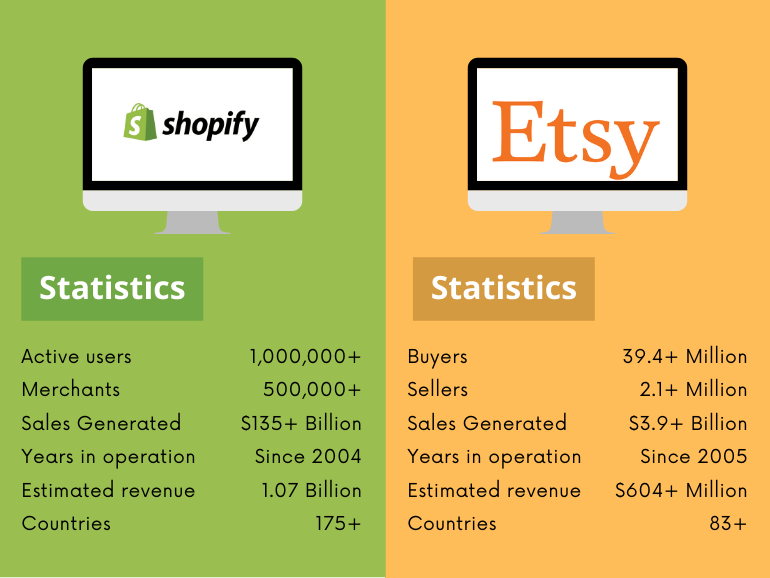
Shopify Features at a Glance
Convenience: Shopify has a more organized way to deal with building and keeping up your site. It has separate dashboards for altering the interface and dashboard. It has an extremely basic site that offers extraordinary visuals and makes the route a lot simpler. It utilizes easy language that is useful for a superior understanding of the customer.
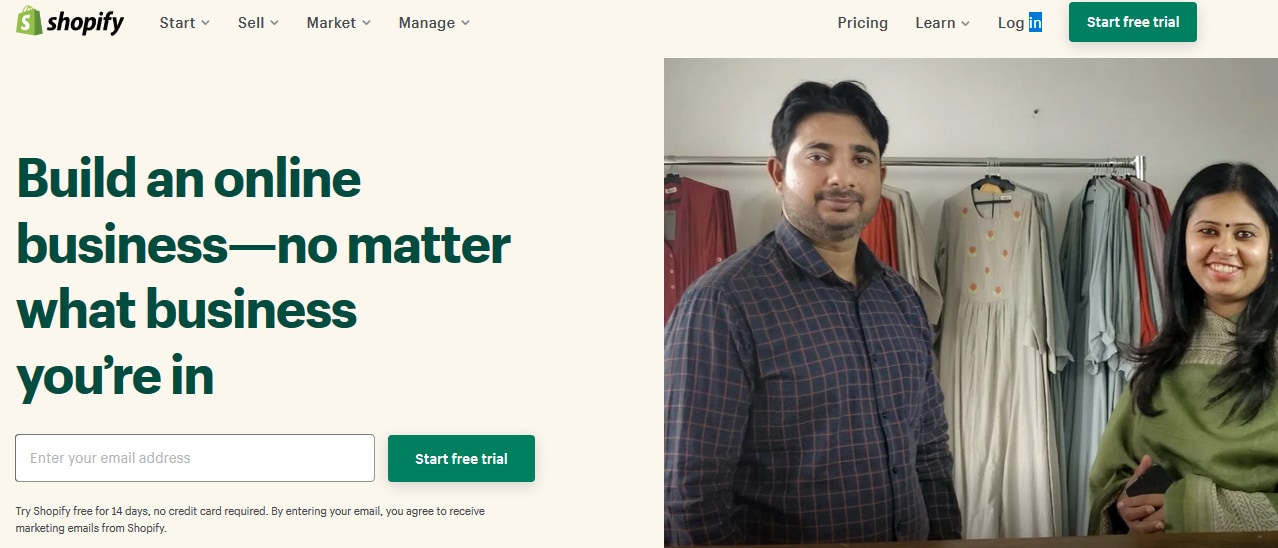
Template: 10 Free themed templates are available on Shopify with a few variations for every theme. You likewise have the alternative of picking an excellent theme among 50+ themes, but you would need to pay some extra charges to utilize them. All the themes are proficiently professional and contemporary regarding their structure.
Customization: While utilizing Shopify for customization, you require the information about coding. You can click on the edit HTML/CSS option without much of a stretch and begin coding as indicated by your customization needs.
Products: Shopify permits you to utilize 3 item alternatives and 100 varieties. Some extra items and varieties can be included by utilizing Shopify applications. You additionally need to download specific applications for selling digitally advanced items on Shopify.

Multiple currencies: Shopify has a multi-money installment usefulness alternative, which encourages you to sell your items per different currency forms. A few templates have inbuilt multi-money sections that empower you to sell the item in local cash. Likewise, it has different multi-cash applications that help you sell in local cash and empower the client to check the other currencies’ costs.
Payment Gateways: Shopify has over 100 installment doors, however presently excludes Square. It empowers the clients to customize the page and gather money for a noble cause on their website page. You may need to pay some extra charges if you decide to utilize some other payment gateways instead of Shopify Gateway.
POS: Shopify POS is present in numerous countries everywhere throughout the globe. POS is a key component of Shopify as it has devoted POS reporting, POS support feature, and POS hardware store.
Transportation: Shopify causes you to effectively utilize the shipping companies and associates you to different organizations worldwide. It additionally permits different adaptable delivery alternatives for its clients. Its shipping highlight can let you submit the ideal request to your supplier to deliver the ideal item to the customer.
Abandoned Cart Recovery: Shopify Abandoned Cart Recovery function permits you to send a single warning through email to your clients regarding the item in the cart normally with some extra discounts to guarantee the transaction.
Tax: The users utilizing Shopify Plus plans can utilize the Avalara tax application, which effectively figures all your taxes and computerizes the whole taxing process. Shopify has a superior and more programmed way to deal with tax figuring, saving your time by doing all the tax counts and has an advantage over Squarespace.
Inventory Management: Shopify has an incredible inventory administration system that empowers the users to effortlessly deal with the inventory in any event and huge companies. You can transfer single or various products without much stretch, utilizing the instruments and again can deal with the stock and get income reports for your sales effortlessly.
Website Optimization: Shopify has the component of adding metadata and editing the titles. It additionally helps in customizing the URL and attaching alt text to your pictures.
Etsy Features at a Glance
Usability: Etsy is likewise simple to use and follows a direct way to set things up. You do not need to be a developer or coder to begin using Etsy. All you need is to make your store, including items, and begin selling.

Design & Themes: Etsy has a theme and design layout. When you begin utilizing Etsy, the store will consequently conform to Etsy’s plan and design. You don’t need to worry as all Etsy’s designs are extremely simple and great, helping the client to explore through your site effectively.
Customization: Etsy doesn’t have a very adaptable customization approach. It has restricted choices for customizing the store. Utilizing Etsy’s customizations is simple for independent businesses; however, if you own a big business and need to make your site exceptionally alluring using different customization techniques, Etsy doesn’t give enough extension to do that.
Expenses: Etsy doesn’t charge any month to month expenses, yet it charges some posting charges alongside transaction charges. This doesn’t make an issue for little scope businesses, but large organizations don’t favor it.
Payment Choices: Etsy acknowledges payments through all the significant Payment choices generally utilized all around the globe. The installment preparing through Etsy additionally costs you some cash, yet this is by, and largely given by the payment handling organizations like the credit card companies. It uses PayPal to handle the payments.
Attracting the Customers: Etsy is useful in drawing the customers towards the product. Individuals can discover your product only through Etsy without first attempting to find your store and discover your item afterward. This easy method encourages customers to discover your product without any problem.
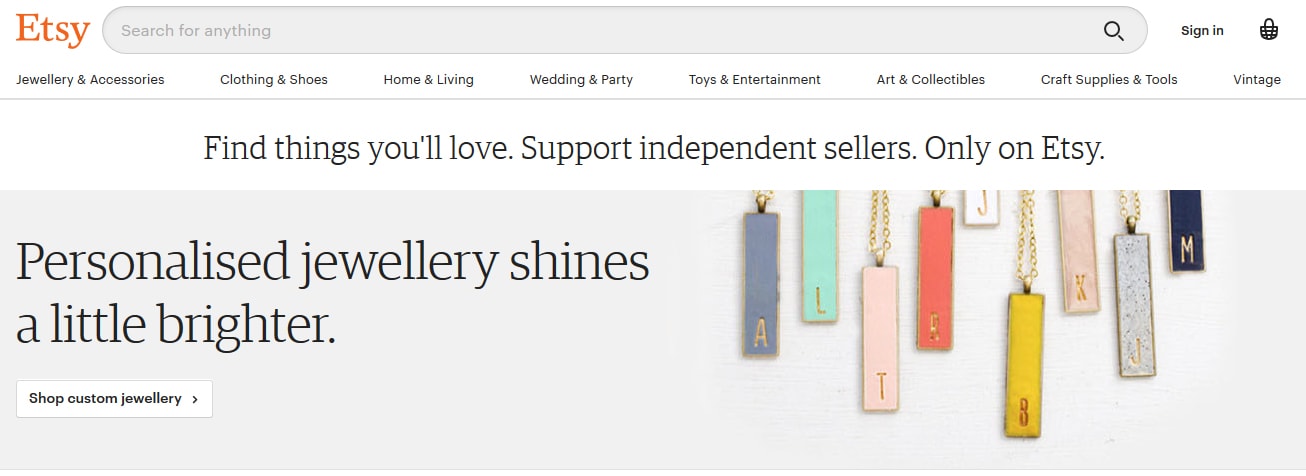
Help & Support: Etsy offers incredible assistance and support for every one of its users. You can undoubtedly discover all the solutions to your issues by looking for them in the assisted place by looking through the menu.
Forum: Etsy likewise has its locale structure and gatherings where talk about investigating your issues. If, by chance, you can’t locate the applicable answers, you can connect with their help group, which is consistently prepared to support you.
Shopify Vs. Etsy: Ease of Use
Both Shopify and Etsy are designed to be easy to use for ecommerce beginners to begin their online selling journey.
The onboarding process is provided by both the platforms when you sign up for an account that helps you learn the critical steps required to start selling. You also get a range of online resources and video tutorials that you can follow to get further support.
With Shopify, you are like building a fresh and entirely new website. So in order to kick off your Shopify store, you need to get familiarized with tasks like:
- Customization of templates
- Building web pages
- Mapping domains
- Creating your own Brand
You got to know all these things before you add your first product to your Shopify store. Though the Shopify interface is designed easily, if you are new to web design, then you might find it challenging at first. Whereas in the case of Etsy, you are just adding listings to an existing online marketplace. However, this sounds easy, but its certainly not. You need to have a fair bit of knowledge of imagery, pricing of products, and copying. But in short, it has quite a straightforward process which the following video demonstrates.
Shipping Goods with Shopify
You can set your shipping rates if you want to ship your goods with Shopify. You can also set the rules depending on the product weight, quantity, price etc. So shipping with Shopify gives you the flexibility you can utilize while you ship your own products. You also get significant shipping discounts that you can avail of via ‘Shopify Shipping‘, which is a real-time carrier quotation system and gives you extremely generous discounts of up to 88% in some cases.
Shipping Goods with Etsy
With Etsy, the platform makes it easy by allowing you to print postage labels from within the tool by which you can avoid the need to go to the post office to buy stamps. Etsy also offers pretty generous discounts and postage labels as well. For instance, you can save up to 30% on postage if you print FedEx, Canada and USPS Post labels using Etsy.
If you are someone who does not want to ship your own goods and you do sell enough products to justify using a fulfillment service well, Etsy gives you better service in this case as well. You can use Shipstation and Amazon Popular FBA service as well.
Suppose you are not fulfilling your products yourself, like the Etsy ecommerce brand. In that case, you can connect your Shopify store to a third-party fulfillment service, allowing you to focus more on promoting and marketing than logistics.
Alternatively, you can also consider dropshipping, which we are going to talk about next.
Dropshipping with Shopify
Dropshipping is a business strategy where the seller will sell their products through a third-party marketplace, such as eBay or Amazon, and never makes, stores or fulfills any of their own products. In that case, I would recommend Shopify, which offers a much better solution for this type of online selling; in fact, its been designed keeping that in mind.
Well, with Shopify, you can connect your online store to a wide range of dropshipping apps and source goods from a pool of suppliers without making any sort of significant investment and effort.
Dropshipping with Etsy
While Etsy is a platform that helps out small-time sellers, it limits the choices of what products they can sell. This means they’re not really a good option if you’re thinking of dropshipping, even though you can get other businesses to fulfill products that are sold on Etsy only if you have designed them.
If you still wish to do dropshipping with Etsy, I recommend using Printful and Printify in conjunction with Etsy. These dropshipping services offer all sorts that the manufacturer can deliver products to your customers depending on artwork or images uploaded by you.
Local Selling & Point of Sale with Shopify
It’s not surprising that during the COVID-19 crisis, more and more physical businesses were forced to embrace ecommerce to ensure their survival. Though it was a sudden necessity, this transition only allowed them to thrive further.
During that scenario, many of the physical stores turned to Shopify as the platform offered them a variety of ways to sell online and also followed the Covid Protocols. Shopify offers a highly customizable solution that allows you to build your website. Local businesses can use it to create fully-fledged digital presences that reflect the essence of their physical stores.
And when you are running a standalone site on your own custom domain name, you can easily use the local SEO tactics, which can further enhance your business’s visibility online in your area. If you have a business that mainly focuses on locals, the extensive range of SEO provided by Shopify will aid you better. In Shopify, you also get the extensive point-of-sale (POS) feature which you can use as a payment processor in physical locations.
Local Selling & Point of Sale with Etsy
Etsy is a platform for crafters, artists, and small businesses to sell their work online. Its Pattern product allows users to identify a specific niche and cater their listings towards it. However, Etsy is more of an online general retailer that sells products to an international market than an exclusive platform for a particular local audience.
Though there are some integrations like Square, which you can use Etsy in a certain point of sale context, that also is restricted to countries like the US, UK and Australia. Also, the sales hardware options you find are limited. So in that sense, Shopify is definitely the more robust platform when you are considering selling in person.
SEO for Shopify
First things straight, whether you choose Shopify or Etsy for your ecommerce site, your success will basically depend on your efforts for search engine optimization and setting up a storefront on either platform. When you have a store on Shopify, the leading search engine you need to focus on is Google when you are running your own store on your domain. It is the main search engine that potential customers will be using to search for your products.
SEO for Etsy
When you sell on Etsy, your focus depends on Etsy’s own search engine, which works differently than Google. It presents search results of those who are ready to buy rather than those who might buy. The crucial benefit that you get with setting up a store on Etsy is that, unlike Shopify, you get two SEO opportunities. On it, you can optimize your catalog for Etsy’s search engine, but as it is going to be crawled by other search engines too, you can get them indexed by Google too. So you do get a double advantage.
So from a pure SEO perspective, having a store on Etsy gives you more chance of getting your products in front of a search audience than a Shopify store. Otherwise as well, whether you choose Shopify or Etsy, you will have to conduct quality research into the best SEO techniques for both.
Customer Support of Shopify and Etsy
Shopify and Etsy have various support options, including phone, chat and email. They offer a variety of tools, resources, forums and FAQs to help you learn more about the products in question. Both are one of their best selling points since it provides several different options for finding out about the product.
In general, nowadays, you look for contact details, and you can get prompted by Shopify and Etsy to search the help pages for an answer first. By doing so, you can get access to their contact details for their respective support teams though this might annoy some of you.
Considering language support, Shopify provides you with 21 languages, whereas Etsy offers it in 11.
Shopify Vs. Etsy: Attracting Customers to Your Store
After all, the ultimate goal is to attract customers to your store and get your sales done. But to do so, you have carefully seen on which platform you should open your store.
And if you are looking for a ready-made customer base, without a doubt, you should go with Etsy. That’s because it has 95+ million customers and $3.1bn USD gross merchandise sales. So in that way, technically, having a store on Etsy puts you right in the font of a more extensive customer base. And if you are selling handmade goods, vintage items or craft supplies, it is unnecessarily difficult to think of a more welcoming audience for your business. Also, the existing customer base of Etsy gives it a major advantage over Shopify.
One Interesting fact that I wish to share with you is that historically, most Etsy buyers have been women. But the year 2021 saw an increase in male customers, with men accounting for 35% of the new customers.
Having said that, you certainly cannot expect an immediate rush of customers right at the moment you start selling on Etsy. That is because products will be listed on a popular platform very fast. To have a good chance of achieving sales, you need to:
- Make a strong price strategy
- Identify Niches Correctly
- Create quality product descriptions
Coming to Shopify, it would be like you are building everything from scratch! Like you have to generate a customer base along with putting a lot of effort into aspects like:
- Content Marketing
- Online Advertising
- Online PR
- SEO
For the newbies out there, this can be expensive and time-consuming as it involves technicalities and a significant learning curve. But if you manage to succeed with all those aspects, it will give you a powerful online asset that you can fully control. To put it in conclusion, Etsy offers you a ready-made customer base that you can tap into, which makes it a definite winner when we talk about attracting customers to your store.
Shopify Vs. Etsy: Which Products can You Sell?
Shopify, as you know, is a website-building platform that lets you build your own online store, Whereas Etsy is an online store which over 7.6 million merchants who sell to around 95 million customers. My Experience was like Shopify is a renting space where you set up your own shop, whereas selling on Etsy is like you are selling your goods in a supermarket!
Shopify lets you greater control over core aspects like:
- Domain name
- Pattern of selling
- Store looks
- Brand presentation
Whereas in Etsy, the customers are already there, but the competition is tough. But before that, you should be well aware of what you can sell on both platforms.
Well, on Shopify, you can sell pretty much anything unless it is considered illegal in any particular country.
But in contrast, on Etsy, you can only sell a particular type of product like:
- Handmade goods
- Craft Supplies(ingredients, materials, or those materials which are used to make creation of an item/occasion)
- Vintage products (at least 20 years older)
So Etsy, as you can see, only lets you sell the above type of items. But if you wish to sell other types of goods, then your obvious choice should be Shopify or any other ecommerce store.
(Note: If you wish to sell other types of goods on Etsy, you can make use of its separate platform ‘Pattern.’)
When online sales started gaining momentum, retailers were at a disadvantage. They had to start from scratch with their online marketing strategies compared to e-commerce giants like Amazon. Today, however, retailers are finally catching up with the competition, and we can see many successful brands taking a new approach to online sales and marketing that is paving the way for disruption in the industry.
Retailers are changing their approach to online sales and marketing. They are moving away from an e-commerce model, where they sell products directly to consumers, towards a new model that focuses on creating a digital experience for the customer. Recent trends show that retailers and brands have been shifting their focus from pure e-commerce models to creating a digital experience for consumers.
This shift has led to an increase in digital marketing costs but has also given retailers more information about their customers at scale. There is no one-size-fits-all approach when it comes to retailing, but many companies have shifted towards making their business more customer-centric rather than simply selling products.
Shopify Vs. Etsy: Comparison Table
| Category | Shopify | Etsy |
|---|---|---|
| #1. Ease of use | Shopify makes it very easy to build a unique and powerful online store. | Etsy does not allow you to do any technical task. You only need to create an account and then start selling your products. |
| #2. Customization | Unlimited – Shopify gives you a wide range of templates and also provides tons of customization. You can have full control of your website and listing. | Limited – Etsy only allows you to edit your photos, description and your logo. You will have to use Etsy’s default layout. Etsy limits your customization, so you can’t create a unique website. |
| #3. Domain & URL structure | Shopify gives you a custom domain to create your own website address. You can build your own identity this way | Your domain is Etsy’s, which means that you use Etsy’s main platform instead of having one of your own. |
| #4. Ecommerce tools & features | Shopify offers powerful tools and a massive app store that enable you to add to functions to your site. | Etsy also has excellent but limited features that make you run your website as efficiently as possible. |
| #5. Payment options & fees | There are no transaction fees with Shopify, and it also supports hundreds of payment gateways. | Etsy has transaction fees, listing fees, and credit card charges. |
| #6. Guidelines | As an independent seller, you are free to do anything with your online store. | Being part of the community of sellers, you need to follow the marketplace rules. |
| #7. Site traffic | As an independent seller, you need to market your online store and increase the site traffic on your own to create brand awareness. | Etsy has continuous traffic, which makes it more convenient for you to discover your products. |
| 👉 Visit Shopify | 👉 Visit Etsy |
Shopify Vs. Etsy: Pros & Cons
Shopify Pros & Cons
Shopify Pros
- Shopify’s scalability is one of its great strengths, allowing anyone from small businesses to big brands to utilize their services. Shopify even offers additional features for those who want them depending on the store type and scale.
- Shopify has the best ecommerce tools out there. They have an inventory system and a way to track customer orders and stock levels, which help make your business grow faster.
- Shopify helps you sell more products with apps for both digital and physical goods and services with your very own custom domain.
Shopify Cons
- Shopify has an impressive app store, but it can also have a negative effect on small-scale merchants as these apps require extra payments. You’ll likely end up paying more for the actual maintenance of these add-ons.
- With Shopify, there is limited exposure; you will need to build your own customer base from scratch. You will have to show potential customers that you are a trustworthy brand by investing in marketing, building a presence on social media, and creating a store that is seen.
Etsy Pros & Cons
Etsy Pros
- This easy-to-use ecommerce system makes it simple to get started. Just upload your product images and information, log in, and start selling. After a few clicks, you’re ready to hit the ground running!
- Etsy is a platform with an established customer base. People are constantly searching for items or can find you through this website. You don’t have to worry about marketing your brand and can rest assured knowing that people can actually find your product.
- You can sell on Etsy for free, but you need to be prepared for listing and transaction fees. If you’re okay with these fees and the low level of customization, it’s a great place for people who sell their creations. If you want more control over your listing and how your listings are viewed, consider upgrading to a higher plan.
Etsy Cons
- Etsy has rules about what can and cannot be sold. They only allow the listing of handmade products (e.g., clothes, jewelry), craft supplies (e.g., fabric paint and canvases) & vintage items (e.g., 20-year-old records).
- Etsy charges a listing fee of $0.20 and a transaction fee of 5% for each sale. There is also a standard 3% + $0.25 payment processing fee that can gradually add up with increased item sales.
- Etsy’s use of its design templates means that you don’t have control over the layout or branding of your product pages. The one-piece up you get is being able to enter your own logo, but you won’t have a strong brand image with Etsy.
Can you use Shopify & Etsy together?
Until now, the Shopify vs. Etsy comparison was focused on the key differences between the two. But you do need to understand that you don’t have to use them in a mutually exclusive way.
Ultimately, the Shopify App store contains a host of stocks with integrations and also third-party apps by which you can connect your Shopify store to Etsy and list, manage and sync your products across both platforms. But if you still insist and use both, Additional fees will apply to use them. But you can still do so if you wish to get the best of both platforms for your online business. For example, you can have a brand and a website via Shopify and also access a comprehensive online marketplace via Etsy.
Integrate Etsy with Shopify
If you’re having a hard time choosing between our two products, you can now get the best of both worlds!
Shopify has an App Store to integrate with other applications. This real-time synchronization makes sure that you avoid confusion or overproduction, so there is less to worry about when running your business. Easily connect your Etsy store to your Shopify account in no time!
Get this integration free for 7 days. After that, pricing starts at $60 per month and includes custom features and unlimited product uploads.
Shopify is a platform that allows businesses to easily create their own online store with different sales channels. By integrating your Etsy listings, you can reach new audiences on these platforms that may not otherwise be able to find your shop.
Both the platforms, along with their standard web interfaces, can be used via mobile apps. The respective apps are ‘Shopify’ and ‘Sell on Etsy,’ and both are available on iOS and Android. Both the apps let you create or update product listings and manage orders. Both the apps have good user reactions on the App store. Shopify app has a rating of 4.6 out of 5 on the iOS app store and 4.1 on the Google Play store. Whereas the Etsy app has a rating of 4.3 out of 5 on the iOS app store and 4.1 on the Google Play store.
Difference Between an Ecommerce Platform and an Online Marketplace
An ecommerce platform is a platform that allows consumers to purchase products directly from the company that owns the platform.
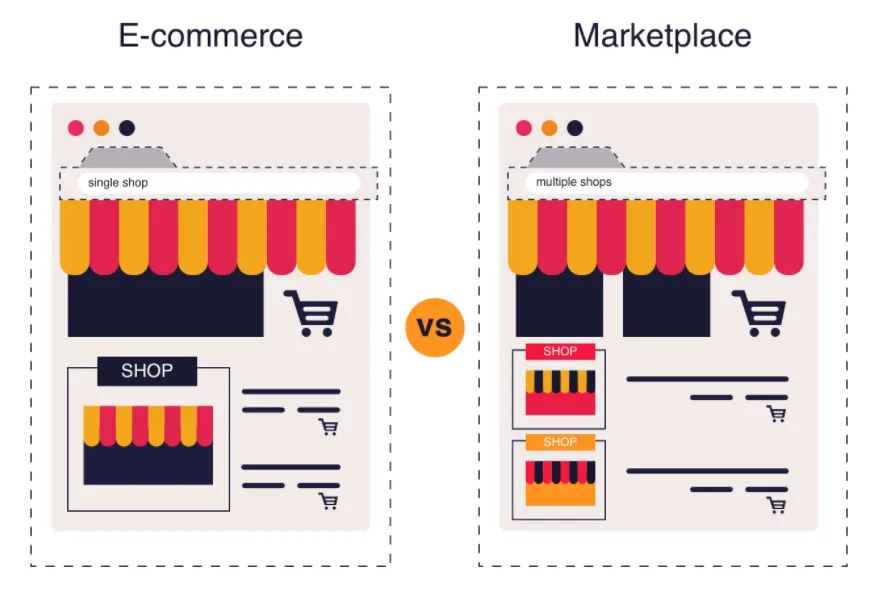
Online markets are a platform for sellers to sell their products. They attract more customers on the internet. On the other hand, ecommerce platforms are used by merchants to build an online store, which is an online storefront for selling goods and services. Etsy is a well-known ecommerce platform that has brought some new developments in the market, like the handmade movement. It has changed its design over time to promote creativity and sustainability.
Online marketplaces do not have their own websites like Ecommerce platforms do, but they use shops that power their site instead of hosting them on their own page.
Online marketplaces like Etsy and Shopify provide a space for independent businesses to sell their products. An online marketplace is a place where the sellers come together to present their goods and services to the public. These platforms allow sellers to set up shop without any upfront investment, save on overheads, and reach a larger audience.
On the other hand, an ecommerce platform provides an interface for selling products online using a website or app storefront. In addition, it includes features like payments and shipping options. Online marketplaces provide limited functionality while ecommerce platforms offer more features like marketing automation tools which helps increase sales.
Shopify Vs. Etsy: Pricing Plans
Shopify Pricing Plans
With Shopify, you do get a 14-day free trial which you can utilize to test it. Talking about pricing plans, here you get 5 pricing plans.
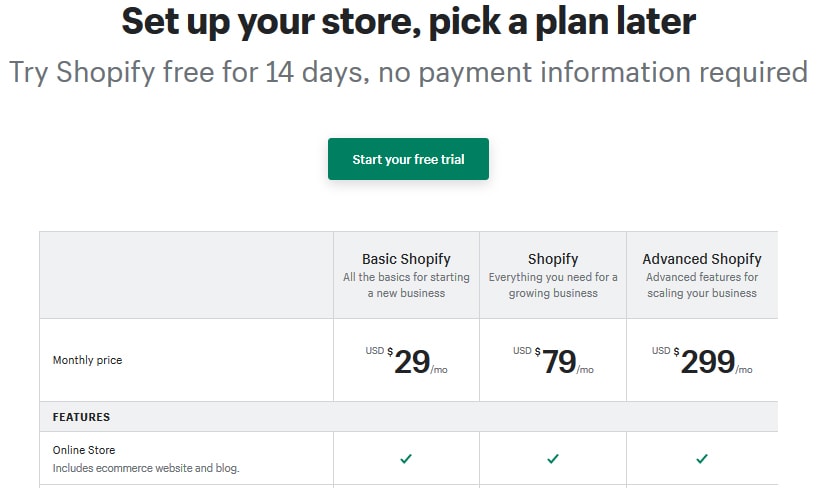
Shopify Starter Plan: This plan costs $5 per month, and you can sell products through social and messaging apps.
The Basic Shopify Plan: This costs $29 per month and is good for entrepreneurs, small businesses, and established brands.
- Unlimited products
- 2 staff accounts
- Manual order creation
- 24/7 Support
- Ecommerce website & blog
- Multichannel selling
- Abandoned cart recovery
- Free SSL certificate
- Discount codes
- Shopify POS App
- Standard credit card rates
- Fraud analysis
The Shopify Plan: This costs $79 per month, where you get more tools to find customers, drive sales, and manage your day-to-day.
- Everything from Basic Shopify
- Gift cards
- Professional reports
- 5 Staff accounts
- Lower credit card rates
- Point of Sale extras
The Advanced Shopify Plan: This costs $299 per month, where you get advanced features for scaling your business.
- Everything from the Shopify plan
- Advanced report builder
- 15 Staff accounts
- Lower credit card rates
- Third-party calculated shipping rates
You can also save up to 20% on your Shopify Plan.
You can save up to 10% on the Shopify plan if you subscribe for one year and up to 20% if you subscribe for two years, which means that you can save up to $16 per month on the Shopify plan and $60 per month on the Advanced Plan!
The Shopify Plus Plan: The pricing of this plan depends on your requirements, and you get Enterprise-grade solutions for high-volume businesses along with extra features with this plan.
Key points to consider in the pricing plans of Shopify.
- In the Shopify Starter plan, you cannot build your standalone online store, but it allows you to sell on social media and messaging apps like Whatsapp and Instagram, or you can also use it to add a ‘buy button’ to your existing website, a point of sale or a Facebook page.
- This is important as the Credit card fees range from 2.4% to 2.9% in the United States, which depends on the plan you choose, while in other countries, these fees are lower.
- The fact that How many users you can have on your account varies a lot by the plan. In the ‘Basic Shopify,’ you get 2 staff accounts, but the ‘Shopify‘ plan gives you 5, and the ‘Advanced’ plan gives you fifteen.
- If you consider the ‘Shopify Plus‘ plan, it is more focused on enterprise users, and as mentioned earlier, its pricing varies according to your needs. With this plan, you get advanced security features, API and fulfillment features,’ white glove’ style account management, and access to more apps.
- Also, the Transaction fees are not applied if you use Shopify Payments, but if you use a third-party payment processor, then transaction fees do apply, depending on the plan you are on.
- You can only get the Detailed ecommerce reports on the Shopify plan or higher.
But will all Shopify plans you get access to core ecommerce functionality like:
- Credit card processing
- Gift cards
- Unlimited digital and physical product catalogs
- Discount Codes
- SSL certificates
- Abandoned cart recovery
Etsy Pricing Plans
Etsy has two fee types to offer:
Listing fees: For each item you list on Etsy.com or Etsy’s mobile apps, you will be charged a listing fee of $0.20.
Transaction fees: When you make a sale through Etsy, you will be charged a transaction fee of 6.5% of the price you display for each listing price and the amount you charge for gift wrapping and delivery.
Etsy listings expire after 4 months and can be automatically renewed for just $0.20. To avoid this fee, listings can be set to auto-renew for a year at the cost of $0.60. For $10 per month, you can join Etsy Plus, which also comes with 15 listing credits and 5 Etsy Ads credits. With Etsy Ads, you can advertise your products in search results and other pages on the online marketplace to drive traffic to your shop.
With Etsy Plus, you also get other benefits like:
- 30% Discount from the printer MOO
- Discounts on shipping boxes, depending on your country of operation.
When you sell anything on Etsy, you are required to pay via Etsy Payments which is Etsy’s payment processing system. Here you can accept a wide range of credit cards and other popular payment methods like Google Pay, PayPal and Apple Pay, which works in 45 countries.
Key points to consider when you use Etsy payments:
- A Credit card fee is applicable in addition to Etsy’s standard 6.5 transaction fees. Also, in the United States, it is at 3% + 25c.
- Also, a ‘scheduled deposit’ system is employed so the money can take time to reach your account.
Top FAQ on Shopify Vs. Etsy
Which is cheaper, Shopify Vs. Etsy?
If you are looking for the upfront cost, then Etsy is cheaper as compared to Shopify. Etsy is very affordable if the person is looking to sell a few products. But if you are looking to earn a lot of money in sales, then Etsy’s becomes expensive for you.
Which is better for scaling the ecommerce business Shopify Vs. Etsy?
One can go with Shopify if looking to scale ecommerce business. Shopify offers massive features and an impressive app store that helps you expand your online store and attract more visitors.
Does Shopify offer a free trial?
Yes, you can create a free account on Shopify. Shopify provides 14 days free trial to its users to start with Shopify without any payment easily.
Do I need a credit card to create an online store on Etsy?
It is not necessary to have a credit or debit card to create a store on Etsy. On the other hand, the person must have a registered papal account to become a verified seller on Etsy.
Do you get free web hosting when you open a store on Shopify?
For sure, Shopify includes a secure, unlimited ecommerce hosting plan on all plans except for the Starter plan.
Is Shopify good for beginners?
At first, Shopify might seem a little challenging for beginners compared to Etsy. That’s because you have to build an entire website from scratch rather than just listing your products. But Shopify does stand out to be the one that is a convenient and easy-to-use tool. It is also widely regarded as one of the best ecommerce platforms, and you can also use it alongside Amazon and eBay. Shopify has made it possible for business owners to sell a massive range of products without sticking to craft supplies and vintage items. Also, you have no limitations on what you can add to your eCommerce store.
Who should use Etsy?
Starting in 2005, Etsy has been a favorite selling marketplace for millions of people across the world. From finding the perfect pieces to sell to getting your products to those looking for them, Etsy offers a wide range of potential customers and customers looking for your products. It is simple and convenient to use. If you are someone who wishes to start selling online and want to do it without a website, then you should choose Etsy. Small businesses usually prefer Etsy because its design works effectively with small-scale businesses and new enterprises. It’s easy to use and comes with a simple interface.
Can you use Shopify and Etsy for free?
As described in our Shopify vs. Etsy comparison, With Shopify, you do get a 14-Day Free trial, and on Etsy, you can create a store free of charge, but a listing fee of 20 cents would be taken for each product along with the transaction fees on each sale.
Is it possible to use Shopify and Etsy together?
It is possible to use Shopify and Etsy together. You can do this via integrations available from the Shopify app store. But depending on the chosen integrations, the charges will apply.
What are the critical reasons for choosing Shopify over Etsy?
The critical reason to choose Shopify over Etsy is that it gives you 100% control over every aspect of your store about what you sell, where you sell and how you present it. Whereas in the case of Etsy, you are restricted to selling only certain types of goods (vintage items, craft supplies, handmade products). Also, you can edit your storefront extensively, and you get the various point-of-sale features as well. In short, you get 100% flexibility in all these areas.
What are the critical reasons for choosing Etsy over Shopify?
The critical reason to choose Etsy over Shopify is that it gives you access to a larger audience instantly. In the case of Shopify, you got to know various technical aspects like SEO, online marketing, and other promotional efforts are to be taken as well. But in Etsy, you just get a ready-made customer base that you can target, and if your Etsy Listings are well-crafted, you can get relevant traffic more efficiently.
Which platform is better if you have to scale your business?
The obvious answer to that question is Shopify which is simply better for scaling your ecommerce business. You get tons of features and an impressive app store to expand your site and attract more visitors. It also caters from small businesses to big size companies like Penguin.
Conclusion: Shopify Vs. Etsy 2024 | Which one is best?
We analyzed all the features of Shopify and Etsy completely. I hope the blog has helped you understand the topic, and now you are fit to make your choice. Selling on a website and selling on a marketplace both have their advantages. At the point when you sell on your website, you can pick how to modify it for better results.
Selling your item on a settled marketplace works better for the individuals who don’t wish to put their time in dealing with a website and investing in marketing their website while maintaining it all by themselves.
Along these lines, we can say that, however, Shopify and Etsy are unique in their manners; they can not replace each other. In fact, you can even integrate the two to better fit your needs. You can choose which device to use for selling on the web-dependent on your necessities.
Also read:
- Shopify Vs. Amazon: Which one is the Best? (Truth)
- Best Shopify Spy Tools for Spying on Competitors
- Best Shopify Dropshipping Themes (Get 200% ROI)
- Slingly Review: #1 Ecommerce Automation Tool (200% ROI)
- Printify Vs. Printful: Which is the Best POD Services?
Affiliate Disclosure: This post may contain some affiliate links, which means we may receive a commission if you purchase something that we recommend at no additional cost for you (none whatsoever!)

